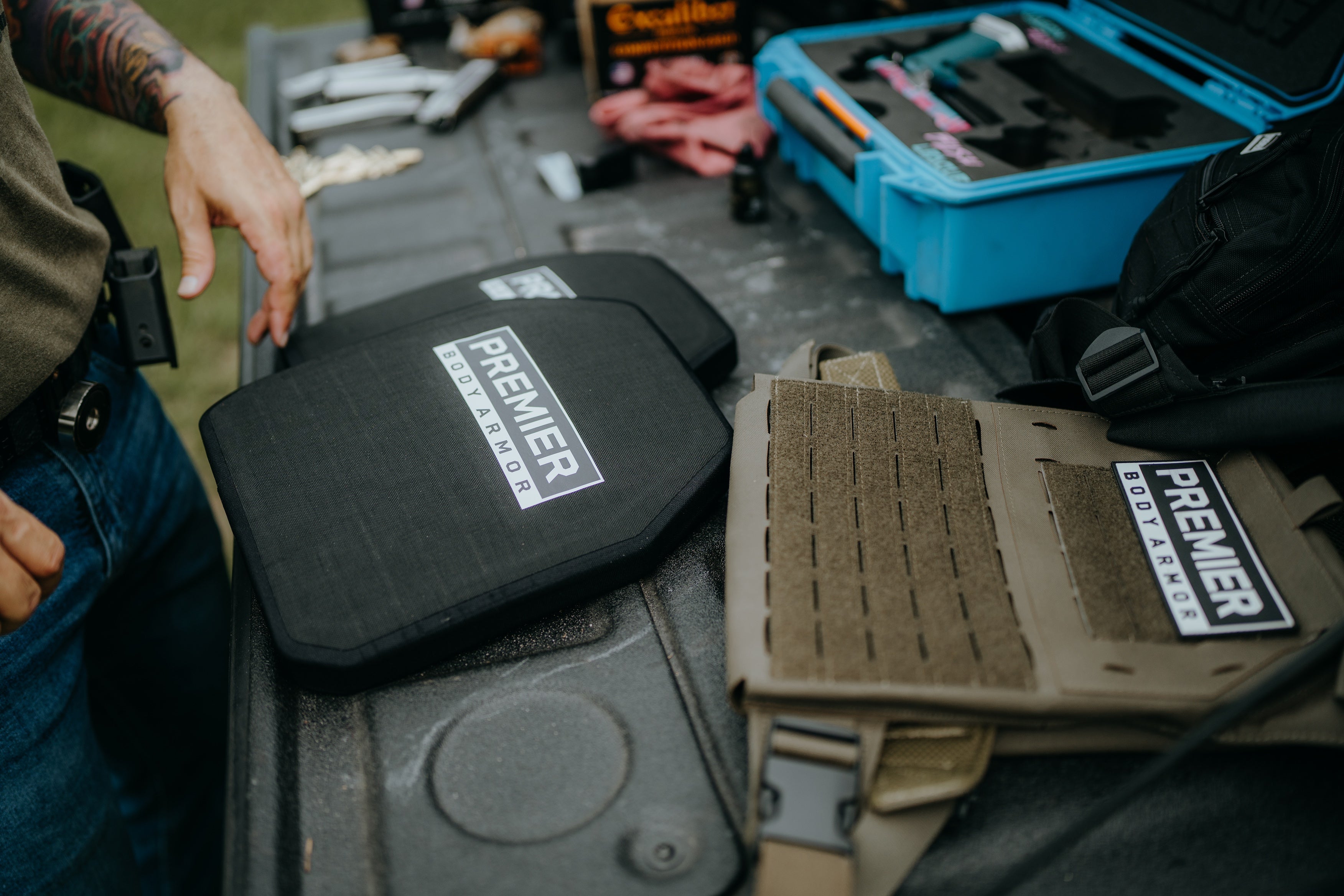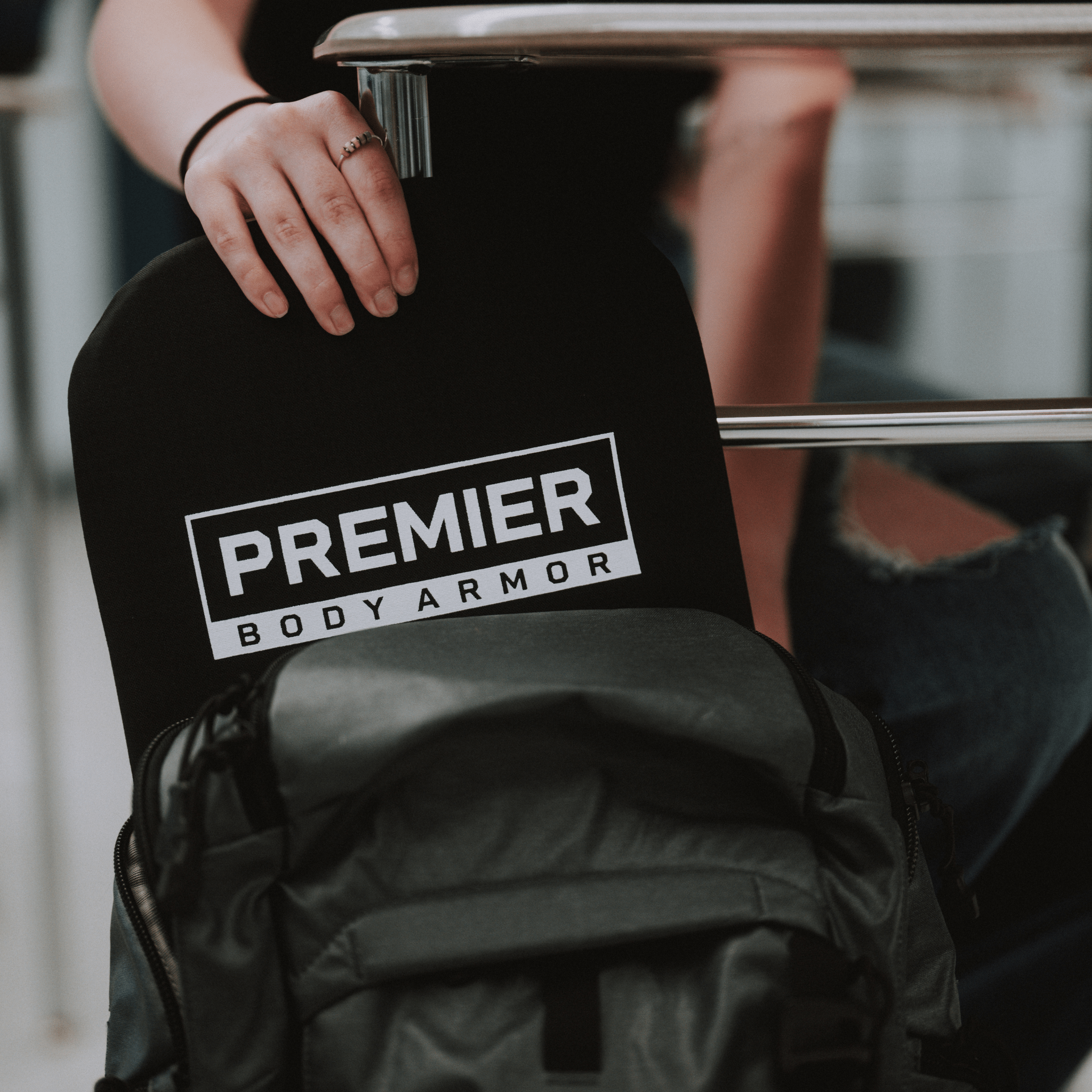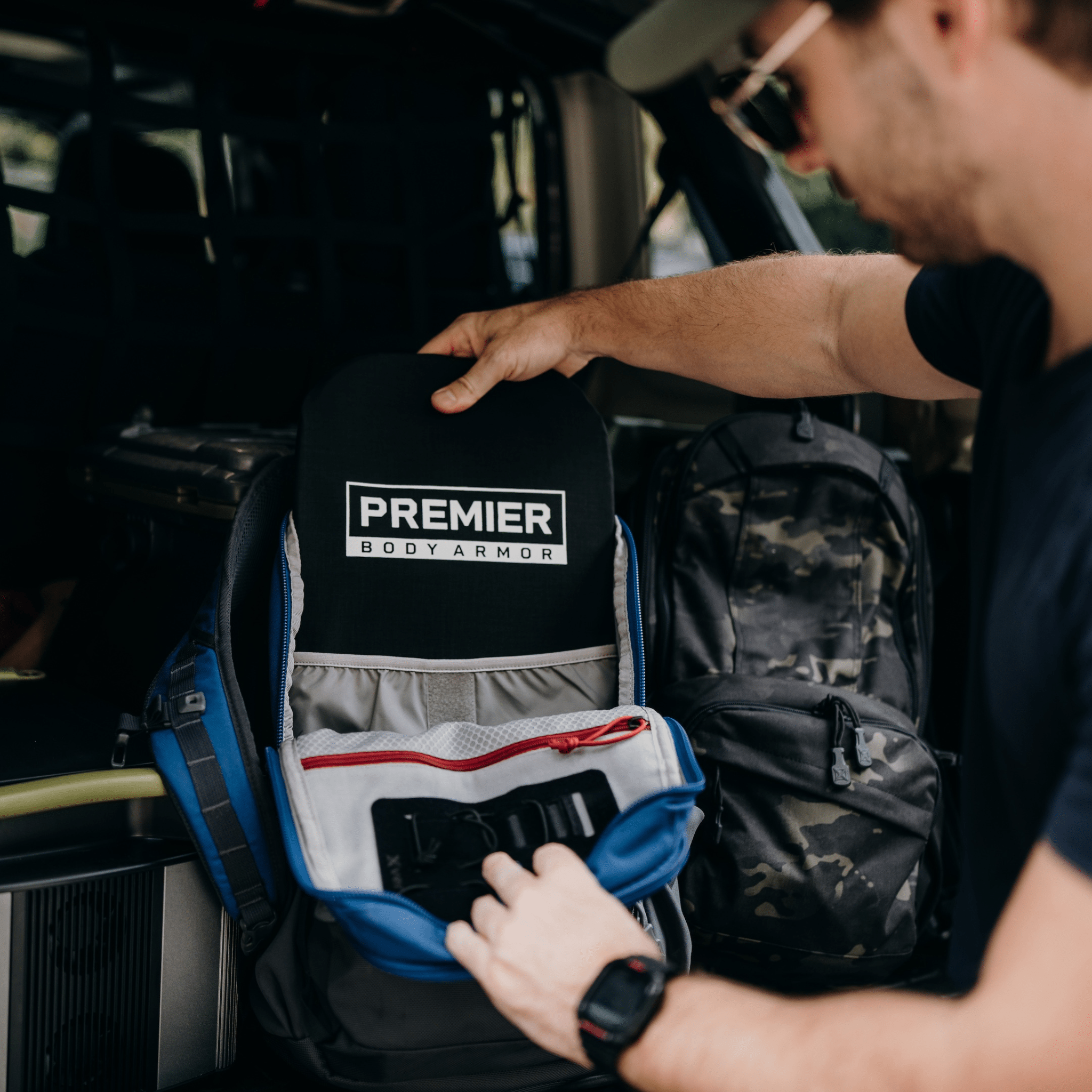72 Hour Survival Kit: A Complete Guide To Your Emergency Go Bag
When emergency strikes, are you prepared for the next 3 days? Learn to pack the best 72 hour survival kit that's full of essentials you’ll need in a disaster.

What is a 72 Hour Kit For?
A 72 Hour Kit is designed for preparedness in times of disaster and includes things like food, water, first aid supplies, clothing, and more to sustain you for up to three days in emergencies.
Without access to these vital items for 72 hours, survival becomes near impossible, making the presence of a well-prepared 72 hour bag or go bag indispensable in times of need.
Three Day Preparedness: Why a 72 Hour Emergency Kit is Crucial
In times of danger, having a 72 Hour Emergency Kit at your disposal is not just prudent — it's essential. Whether it's termed a 72 hour survival kit or a 72 hour get home bag, the purpose remains the same: to provide you with the resources needed to sustain yourself for at least three days during unforeseen emergencies.
With natural disasters, unexpected events, or even urban disruptions becoming increasingly common, investing in a 72 hour survival kit isn't just a precaution—it's a proactive step towards protecting yourself and your loved ones.
Where to Keep Your 72 Hour Emergency Kit
Deciding where to store your emergency 72 hour kit is as important as putting together its contents. Ideally, it should be easily accessible yet secure, so you can grab it swiftly in times of need. Think about keeping one at home, mindfully placed where everyone knows its location.
Having a kit in your vehicle is often wise too, especially for unexpected situations while on the road. Additionally, If you spend a lot of time at work, having a kit there can provide peace of mind.
Remember, the effectiveness of your emergency kit lies not only in its contents but also in its accessibility. So, wherever you choose to store it, make sure you can reach it easily to get the most out of its utility.
The Complete 72 Hour Survival Kit Checklist
When it comes to preparing for emergencies, having a well-stocked 72 hour survival kit list is your ticket to peace of mind. So here's a straightforward 72 hour survival kit checklist with the most critical 72 hour kit contents to make sure you're ready for whatever challenges may come your way.
Water and Filtration
You usually can’t survive more than 3 days without water. So staying hydrated might just be the most important thing to keep in mind. Here’s what you must know to guarantee you have access to safe drinking water in those pressing moments:
- Water Bottles: Keep a supply of water bottles for you and your family on hand. They're convenient and often necessary for storing your water on the go.
- Purification Tablets and Filters: Make sure your water is safe to drink by having purification tablets and filters ready.. They're invaluable for treating water from questionable sources, making it safe for consumption.
- Hydration Multipliers: Don't just replenish fluids; replenish electrolytes too. Hydration multipliers are a must-have addition to your kit, ensuring you maintain proper electrolyte balance during physically demanding situations.
Food
Here's what you need to keep you fueled and nourished. The best food for your 72 hour kit and any emergency:
- Shelf Stable Meals and Snack Ideas: Stock up on non-perishable items like energy bars, nuts, and canned goods that require minimal preparation and provide essential nutrients to keep you going.
- Freeze Dried Foods and MREs: Include options with a long shelf life and easy preparation, such as freeze-dried fruits, vegetables, and ready-to-eat meals.
First Aid
A well-equipped first aid kit is your first line of defense:
- First Aid Kit: Make sure yours includes emergency stables like adhesive bandages, sterile gauze pads, and antiseptic wipes to address minor injuries and discomfort.
- OTC and Prescription Medicine: Don’t overlook the importance of adding over-the-counter pain medication to your kit either. Also, if you have your prescription medications tailored to your specific medical needs, don’t forget them.
- Bleed Stop: For more serious injuries, having bleed stop products at your disposal can be life-saving These items can help manage severe bleeding until professional medical assistance arrives. For top-quality first aid kits and bleed control gear, consider the M-FAK Mini First Aid Kit and Premier's Bleed Control Kit. These comprehensive kits are designed to meet the highest standards of safety, making you prepared for whatever emergencies you face.
Clothing
When curating your 72-hour emergency kit, don't forget about the importance of including appropriate clothing for all scenarios. Here is a simple guide to what you'll need to stay comfortable and protected in any weather:
- Warm Weather Clothes: Ensure you have lightweight and breathable attire such as t-shirts, shorts, and sandals to keep cool during hot climates. Opt for moisture-wicking fabrics to help manage sweat and prevent overheating.
- Rain Gear: Be prepared for wet weather by packing waterproof jackets, pants, and ponchos. These items will help keep you dry and comfortable, which will prevent discomfort and illness associated with exposure to rain.
- Cold Weather Clothes: Include insulated layers such as thermal shirts, fleece jackets, and wool socks to stay warm in chilly temperatures. Don't forget accessories like hats, gloves, and scarves to protect your extremities from frostbite and hypothermia.
Self-defense and Protective Gear
- Tasers: When faced with danger, tasers offer a non-lethal yet formidable means of incapacitating threats. They provide a window of opportunity to escape dangerous situations unscathed, meaning they can be an excellent addition to your 72-hour survival kit. But, like any tool like this, practice the utmost caution when handling it.
- Pepper Spray: A compact pepper spray canister holds the capability to temporarily blind imminent threats. It can serve as a tactical asset in self-defense.
- Body Armor: During times of danger, body armor acts as a protective shield against ballistic threats. It not only provides a physical barrier but also creates a sense of security that bolsters the wearer’s confidence. By reducing the likelihood of serious injury and death, body armor allows individuals to move through the most perilous situations with resilience.
Our Level III Backpack Insert is all about safety and versatility. It's tough enough to handle common rifle threats, crafted from top-notch materials, and meets strict NIJ ballistic standards. This 10"x15" rifle-rated armor panel slips right into most standard-sized backpacks, giving you discreet protection without cramping your style or comfort. That way, you can continue to wear your everyday clothes while remaining guarded.
Shelter and Sleeping Gear
Prepare for rest and shelter even when you need to take refuge in challenging environments using this shelter and sleeping gear list:
- Tent: A reliable tent offers secure shelter from the outdoor elements. It provides a comfortable haven for rest against harsh weather conditions even when your home might be constantly on the move.
- Sleeping Bag: A quality sleeping bag provides warmth and insulation, granting you restful sleep even in cold climates or rugged terrains.
- Sleeping Pads: Sleeping pads offer cushioning and comfort, minimizing discomfort from the earth’s uneven terrain.
- Tarps: Lightweight tarps provide protection and shelter, serving as makeshift roofs or ground cover to guard you against the rain, wind, and sun.
Hygiene and Toiletries
Another all-important aspect of emergency preparedness: hygiene and toiletries. In times of crisis, maintaining cleanliness is not just about comfort — it's about maintaining overall health and well-being. Check out the comprehensive list of everyday care items for survival situations:
- Soap, washcloth, and body wipes
- Stay fresh and hygienic with cleansing items like soap, washcloths, and body wipes. It could be a good idea to store some of these items (as long as they’re non-perishable) away if you ever encounter an emergency or survival situation.
- Toothbrush and Toothpaste
- Just because you are in a survival situation does not mean you can’t preserve oral health. Bring along your toothpaste and toothbrush in your 72 hour survival kit. Another idea is to pack chewable toothpaste (a popular choice amongst backpackers and campers)
- Toilet Paper and Waste Disposal Bags
- Ensure proper sanitation by bringing along toilet paper and waste disposal bags. If you are in an outdoor setting, it is often worthwhile to bring a small, lightweight shovel for digging a proper latrine or disposing of waste in a more environmentally sound manner.
- Feminine Hygiene: Prepare for all needs with feminine hygiene products, ensuring that women can maintain comfort even in emergencies.
- Hand Sanitizer: Combat germs and bacteria with hand sanitizer. It can prevent illness, which makes it a crucial item for your 72 hour survival kit
- Hairbrush: Continue to maintain personal grooming with hairbrushes, as it promotes overall tidiness and can even boost morale in the hardest survival scenarios.
Documents and ID
In your 72-hour survival kit, include your personal documents and identification to allow for optimal communication and access to vital services during emergencies.
- License and Passport Copies: Copies of licenses and passports provide proof of identity and citizenship, which could be critical for accessing resources in unforeseen situations.
- Birth Certificates for Children: Ensure proof of guardianship and identity for children. This is especially important for accessing medical care and other services during emergencies.
- Documents for Medical Needs: Include medical documents such as health insurance cards and prescription information to get proper treatment at all times.
Survival Gear
Some survival gear items are absolutely essential in your 72-hour kit. Here’s the all-encompassing list:
- Pocket Knife: A versatile tool for various tasks, a pocket knife is indispensable for cutting, slicing, and sometimes self-defense during survival scenarios.
- Solar Power Bank: Stay connected and powered up with a solar power bank. This device would grant you access to electronic devices and communication in some off-grid locations.
- Flashlights: Light sources for navigation and signaling during emergencies are provided by flashlights to illuminate dark environments.
- Cash: Keep a sense of financial flexibility with cash, which offers a backup payment method when electronic systems fail during emergencies.
- Lighter/Matches: Start fires for warmth, cooking, and signaling with lighters or matches.
- Duct Tape: Duct tape, one of the most versatile items in survival kits, facilitates repairs and first aid applications for all kinds of situations.
- Ziploc Bags: During emergencies, Ziploc bags organize and protect essential items, ensuring food, water, and supplies remain dry and accessible.
- Pet Supplies: Make sure your furry companions' comfort and well-being are in shape during emergencies with pet supply staples like pet food, water, and any necessary pet-friendly medications tailored to their needs.
- Maps and Compass: Navigate confidently through unfamiliar terrain with maps and a compass. This is particularly handy whenever technology fails you.
- Charging Cables and Batteries: Stay powered up and connected with charging cables and spare batteries for electronic devices.
Beyond 72 Hours: Preparing for Longer Emergency Situations
When disaster strikes, being prepared for the first 72 hours is crucial. Extend your preparedness beyond the first few days by prepping for disaster and building a 72 hour go bag (or one that could survive you longer).
Written by Andrew Schuler










Leave a comment